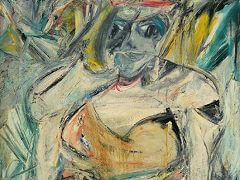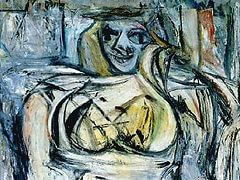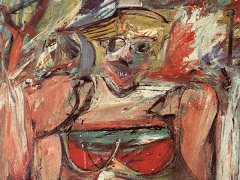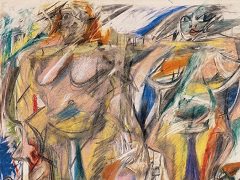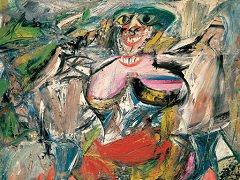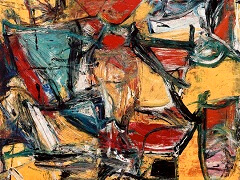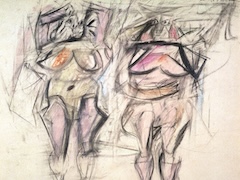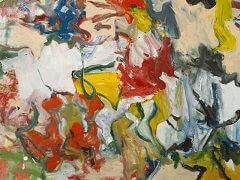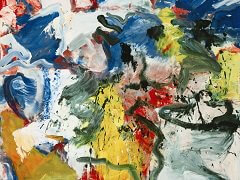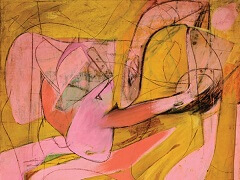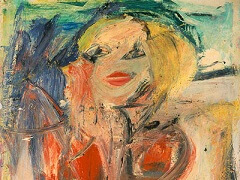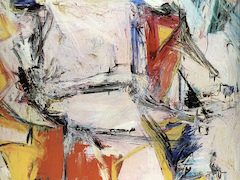Sketch for Woman, 1953 by Willem de Kooning

In the early 1950s Willem de Kooning, a keg figure amongst the Abstract Expressionists in New York, produced the first of a series of works entitled Woman I. At a time when many art critics in the United States were praising what they referred to as the 'purity' of abstract art, de Kooning's re-introduction of the human figure was roundly condemned as anathema to modern painting. Notably, de Kooning was not rejecting the gestural mark-making that had characterized the work of his contemporaries such as Pollock, Mark Rothko and Robert Motherwell. Rather, he was accentuating the links between modern painting and the European traditions out of which it had developed. For de Kooning, these strange and menacing creatures, emerging from their frenzied background, already apparent in this preparatory sketch, recoil traditional representations of women from Rembrandt and Titian through to Matisse and Gauguin. At the same time, however, they allude to the notion of female sexuality as threatening and destructive to men - a highly problematic presentation widely promoted in the popular culture of 1950s Hollywood movies.

